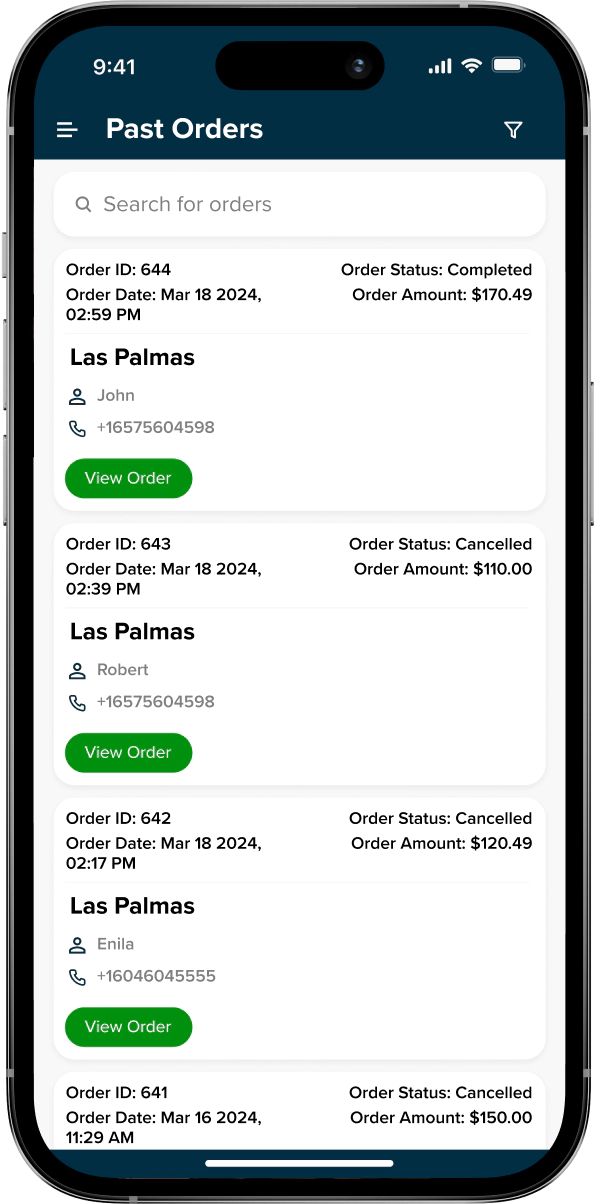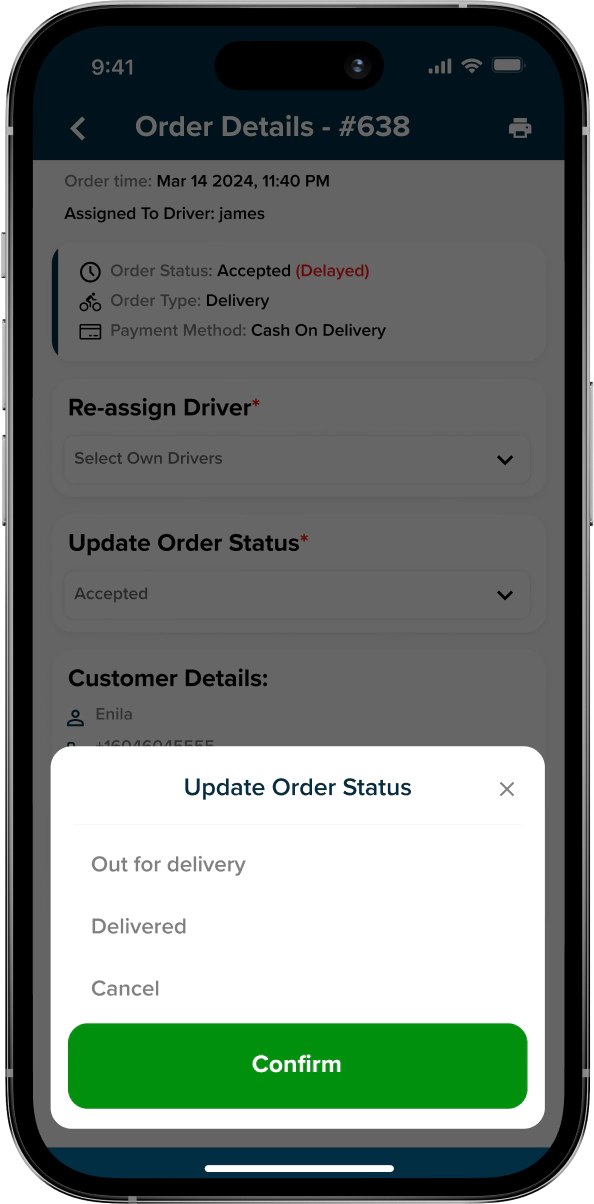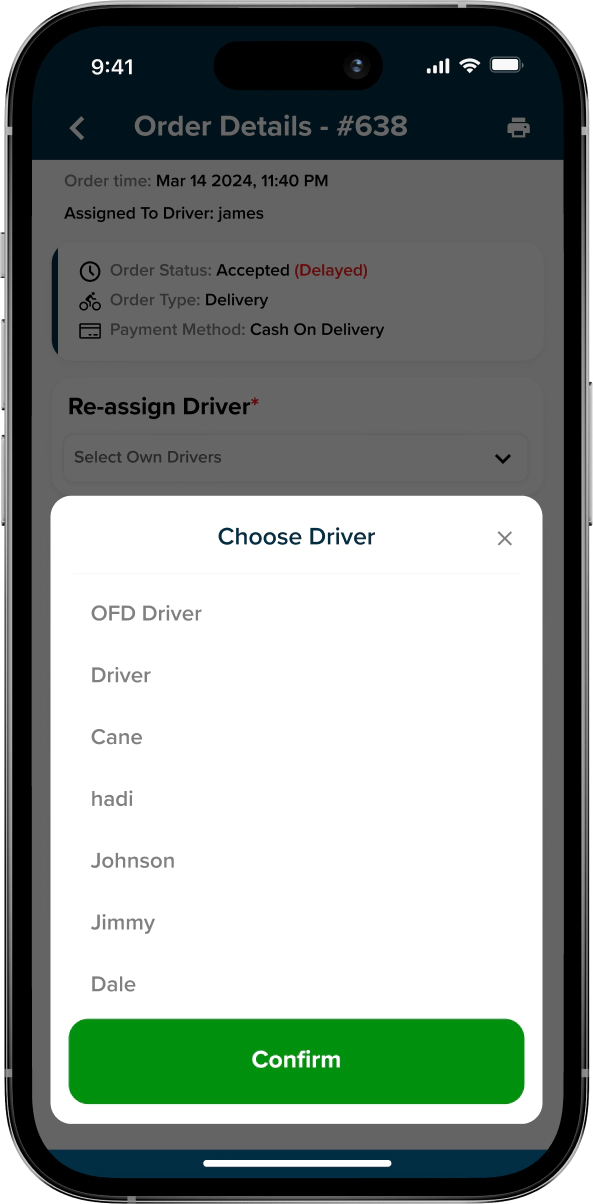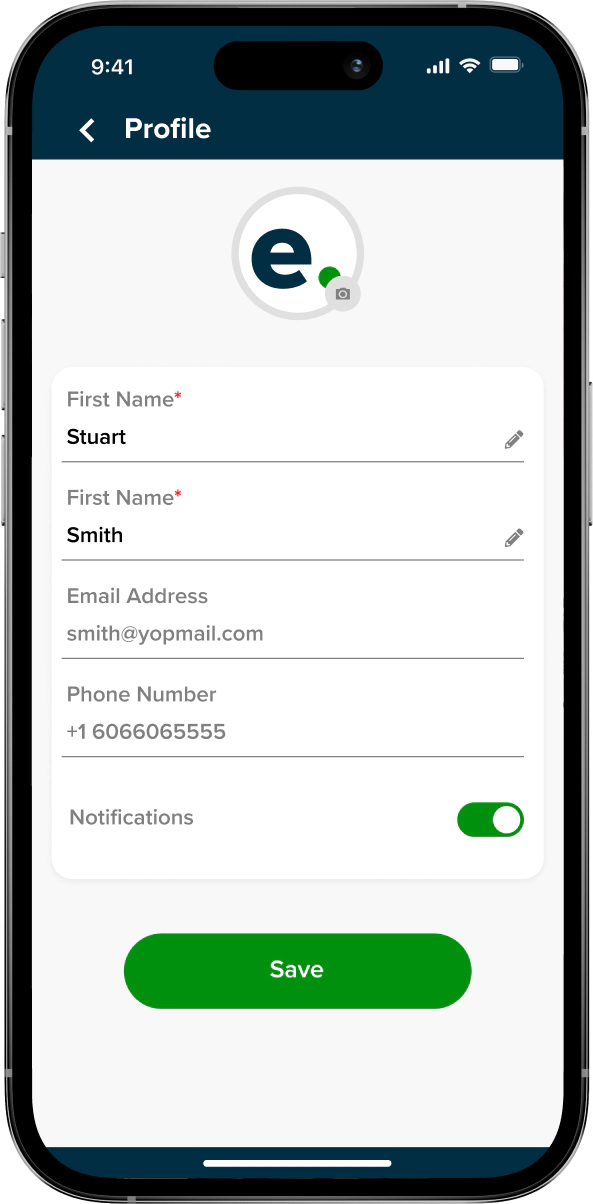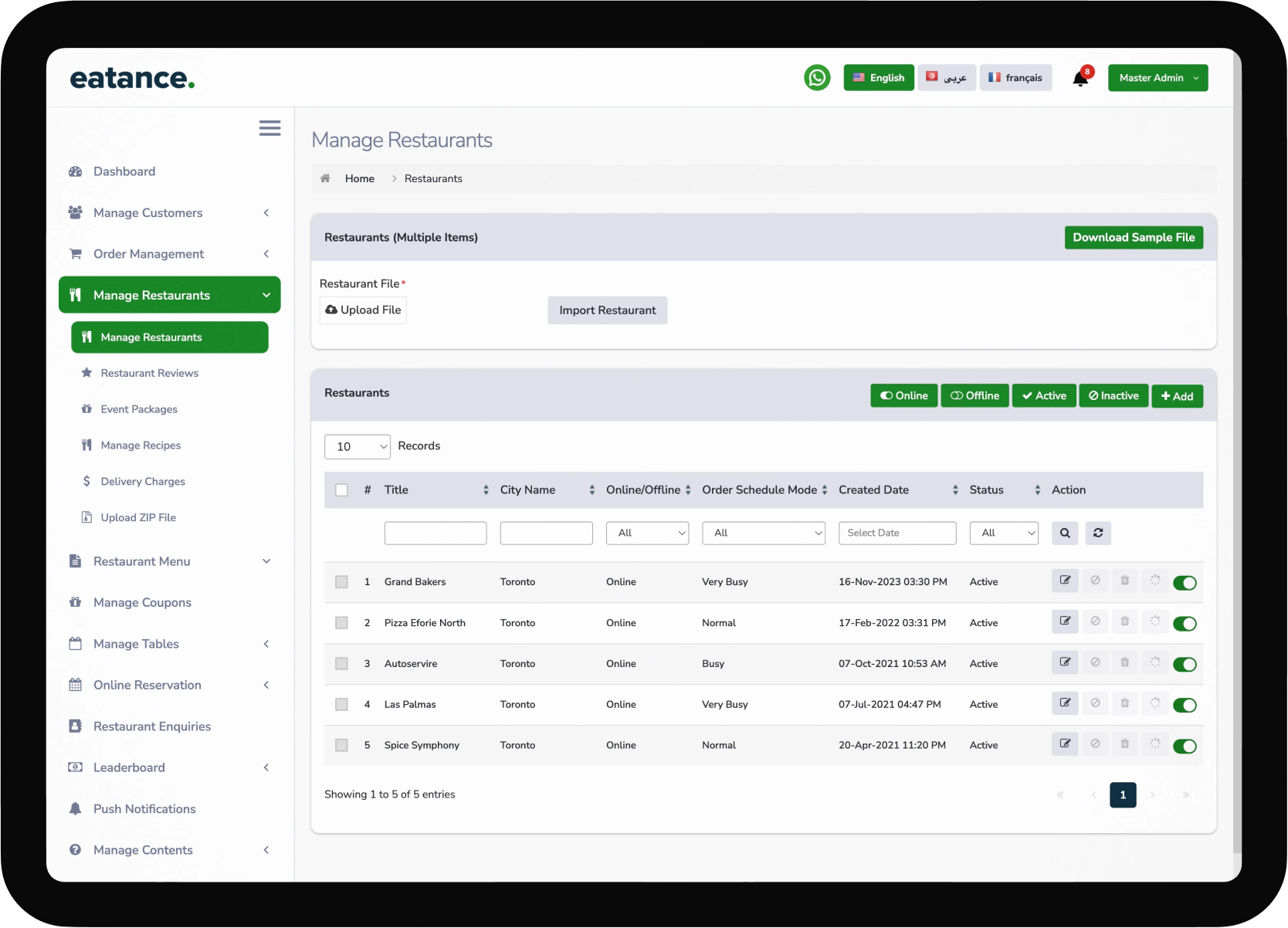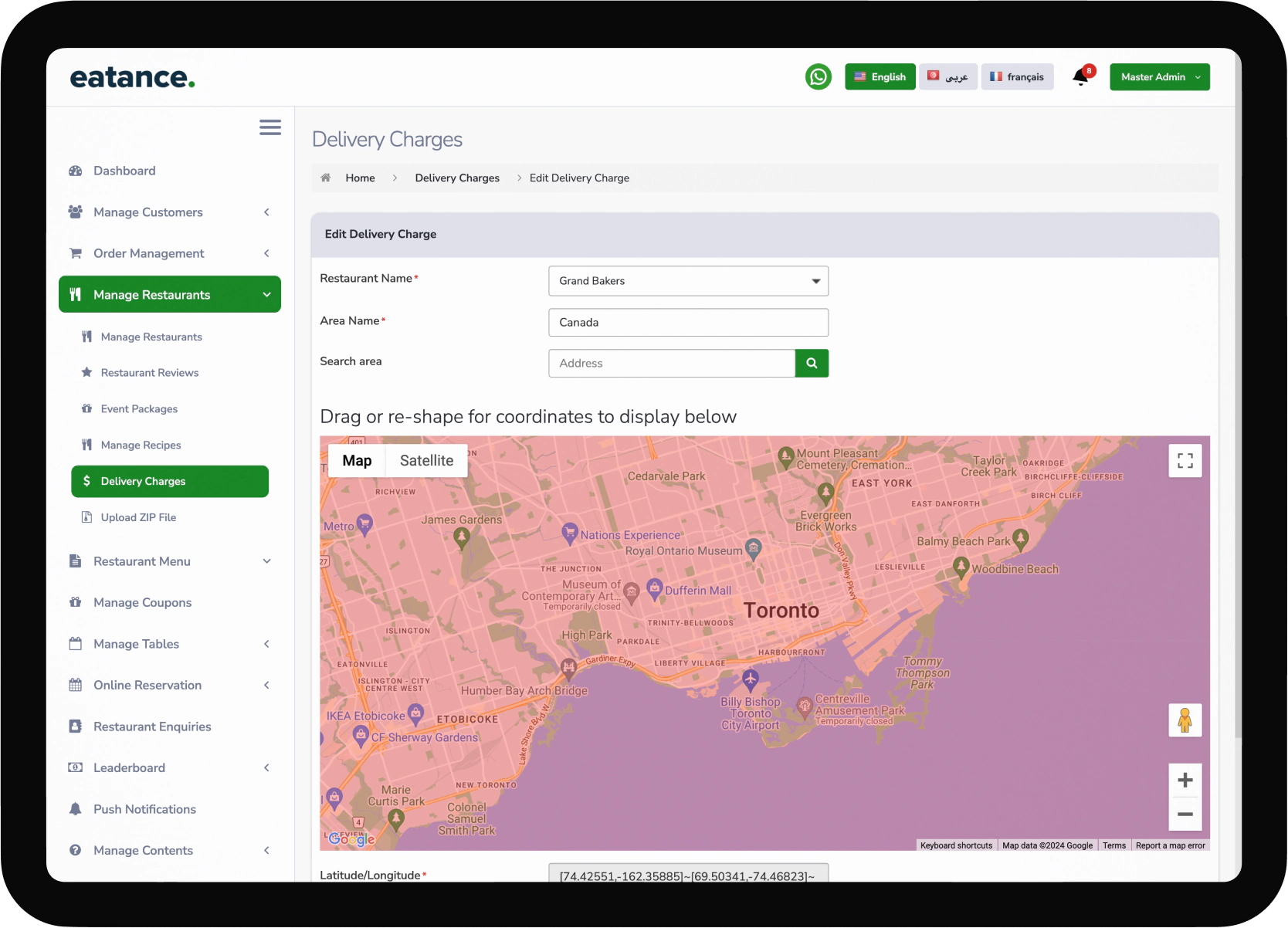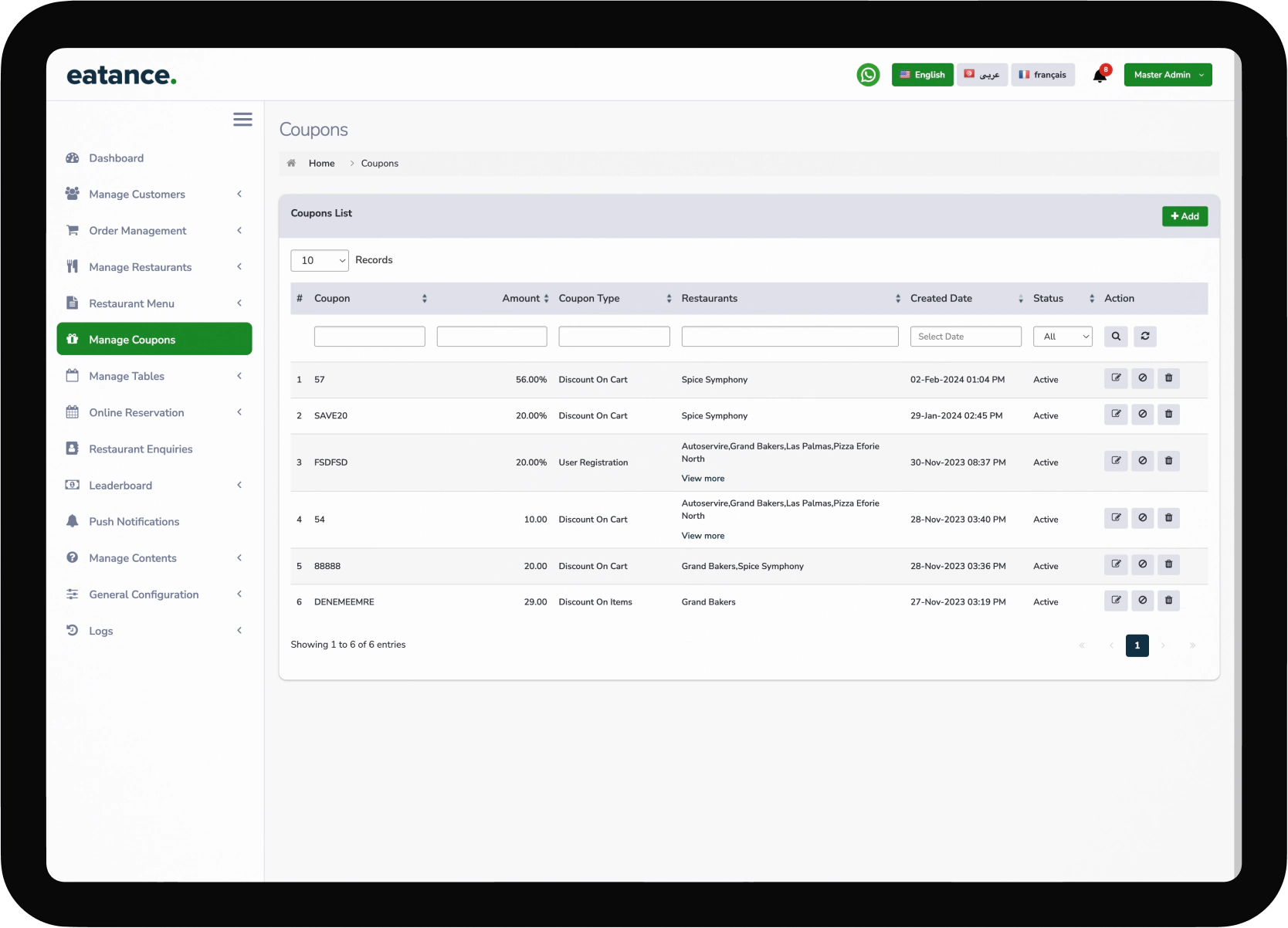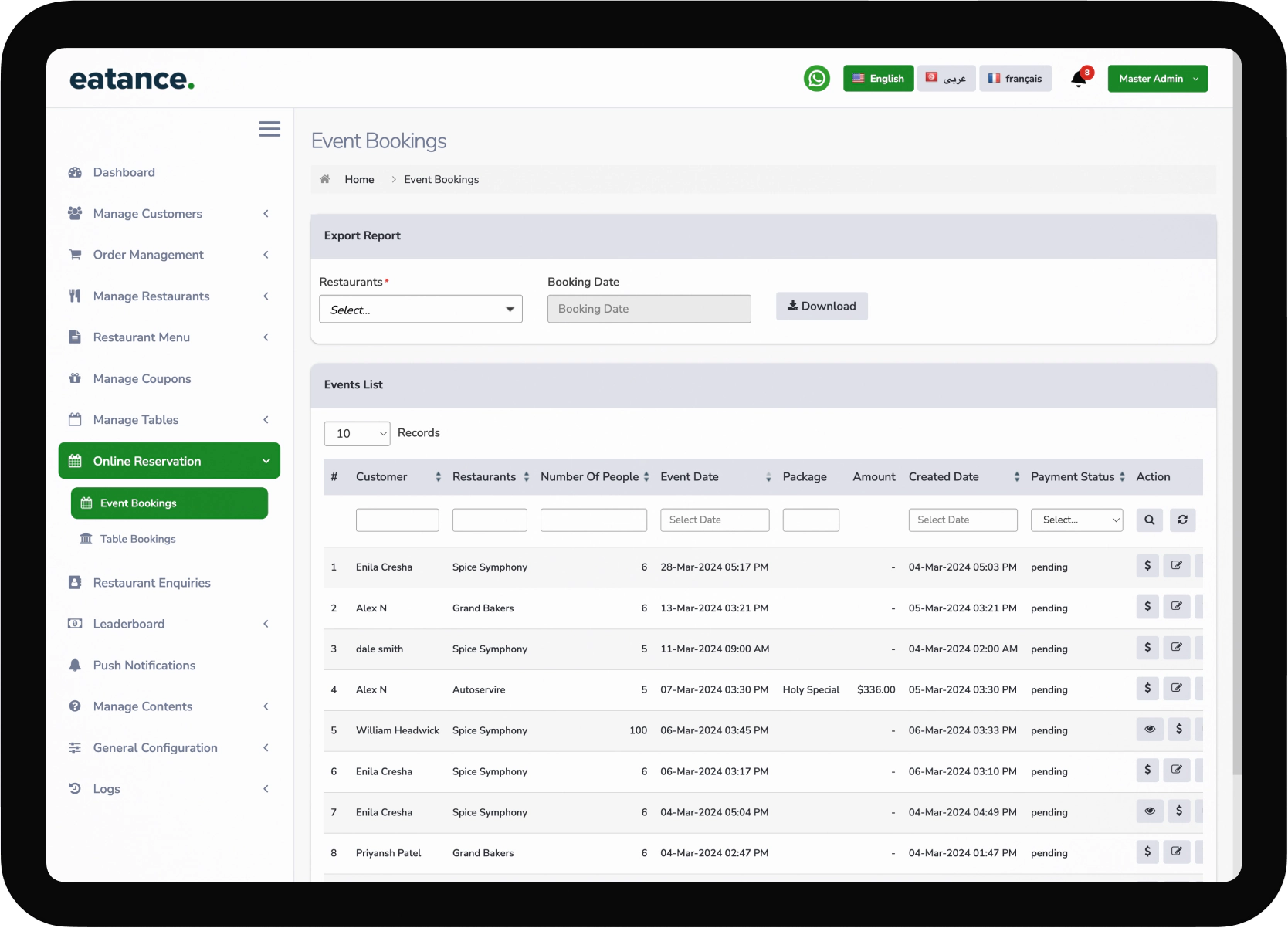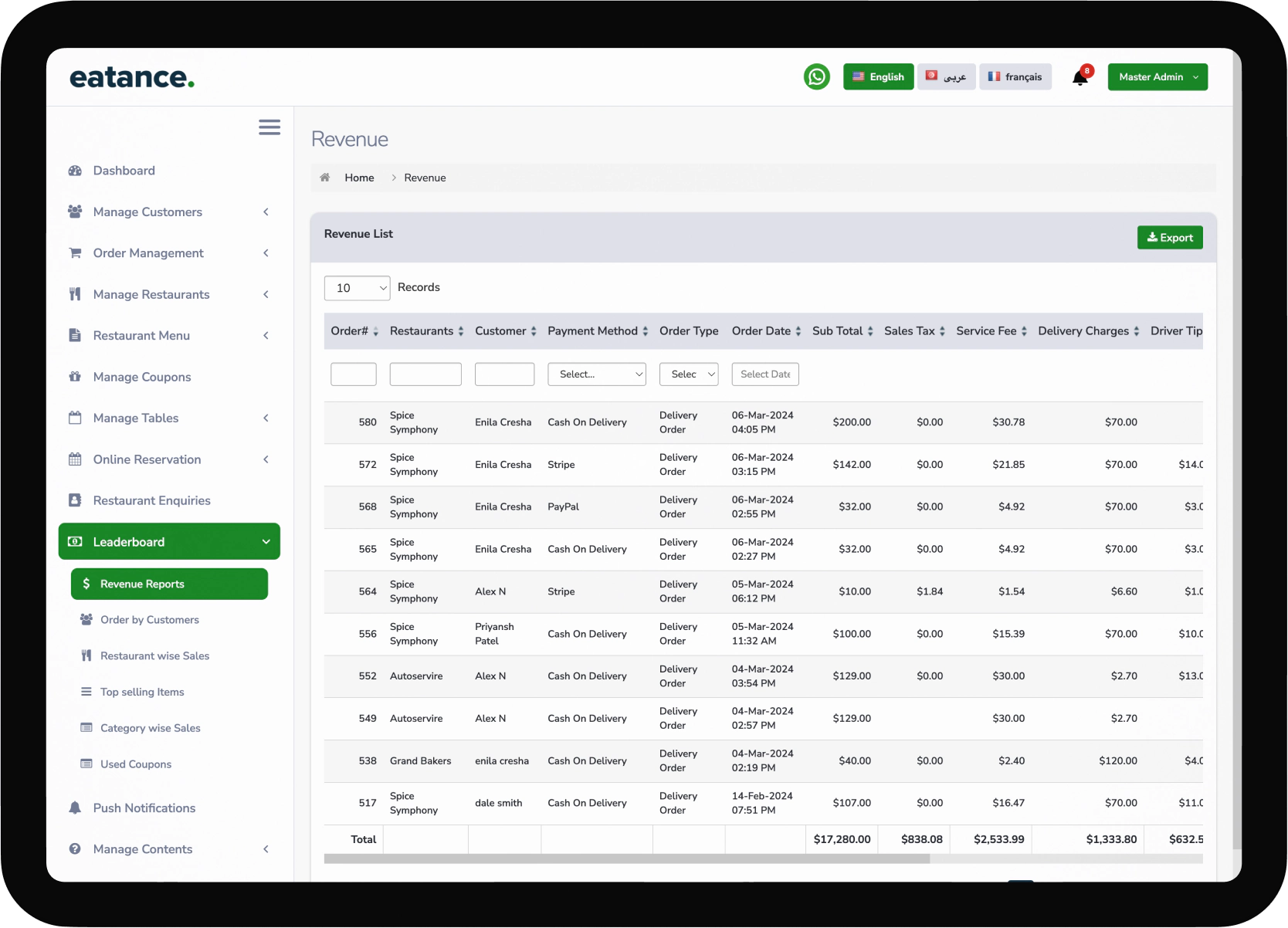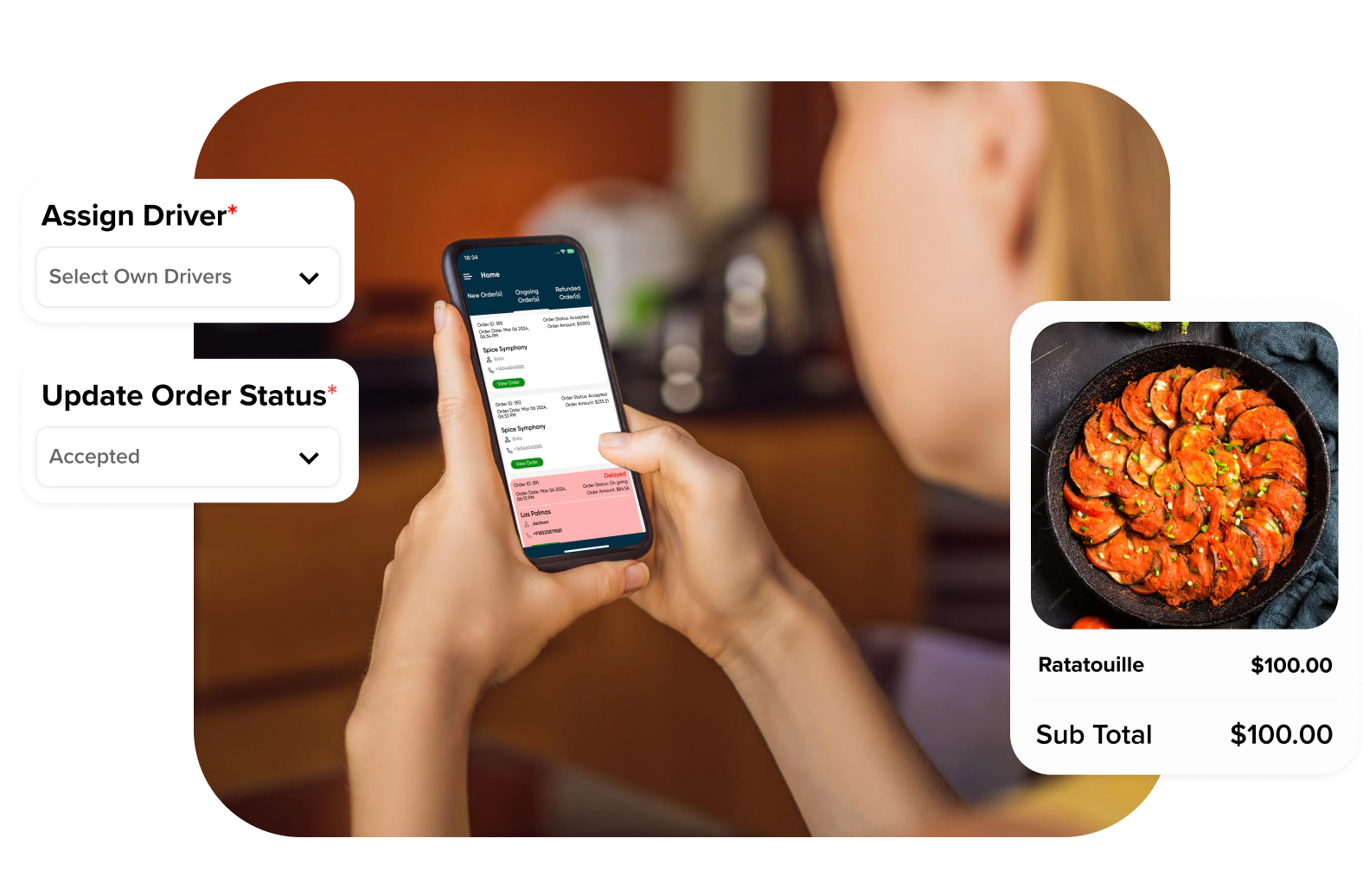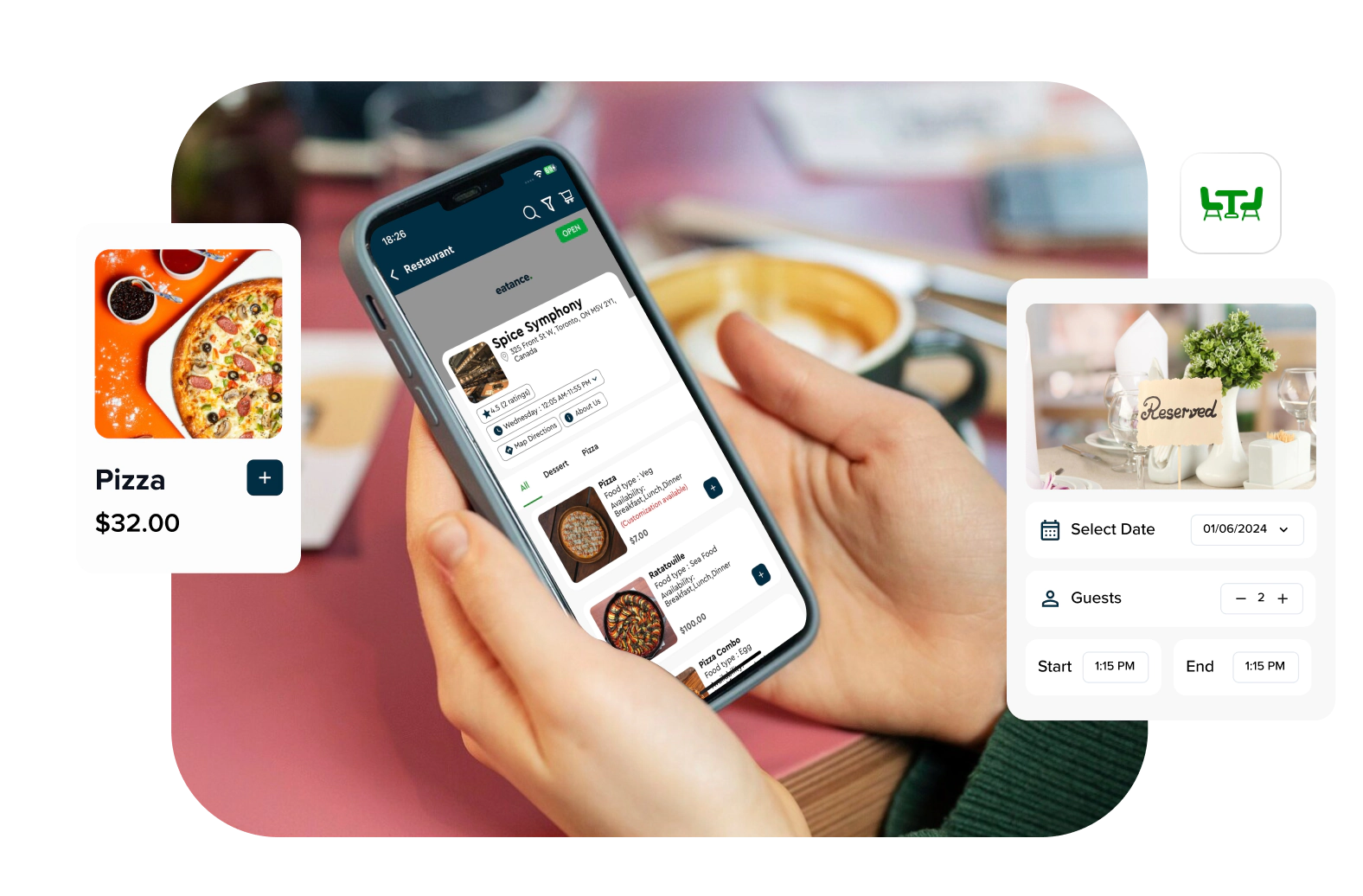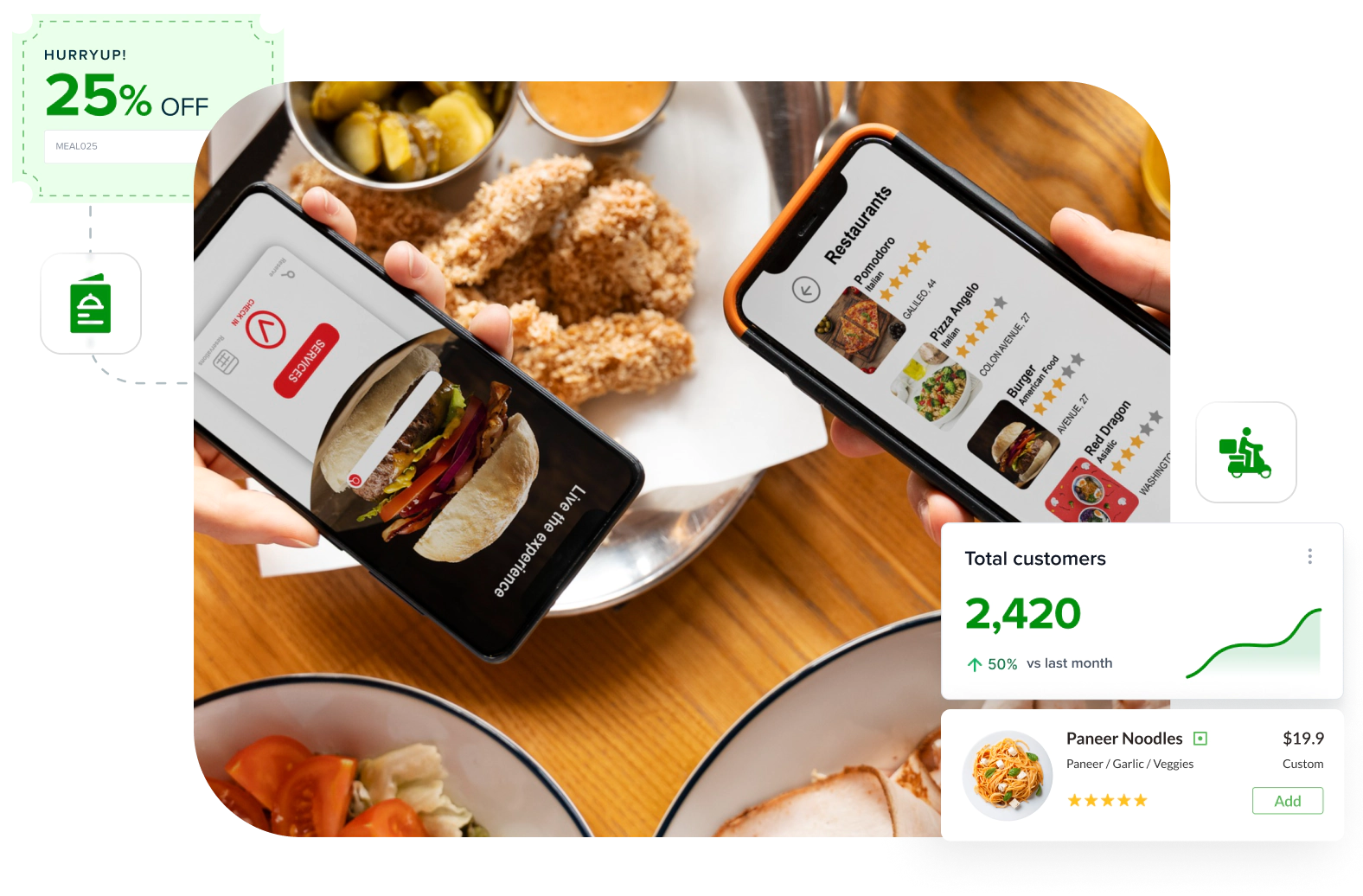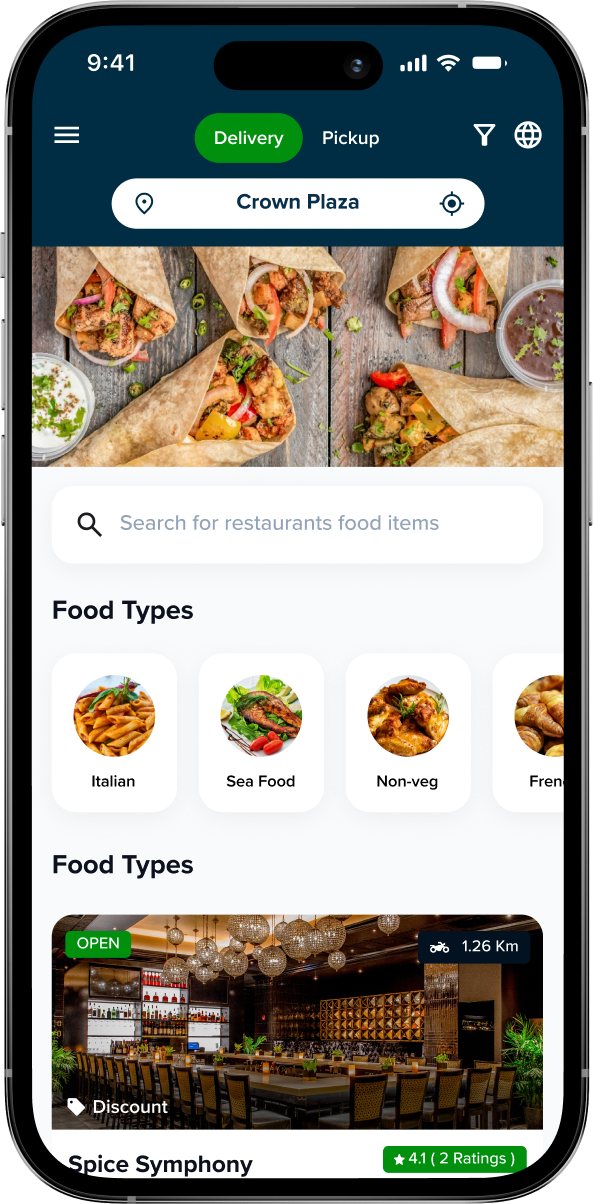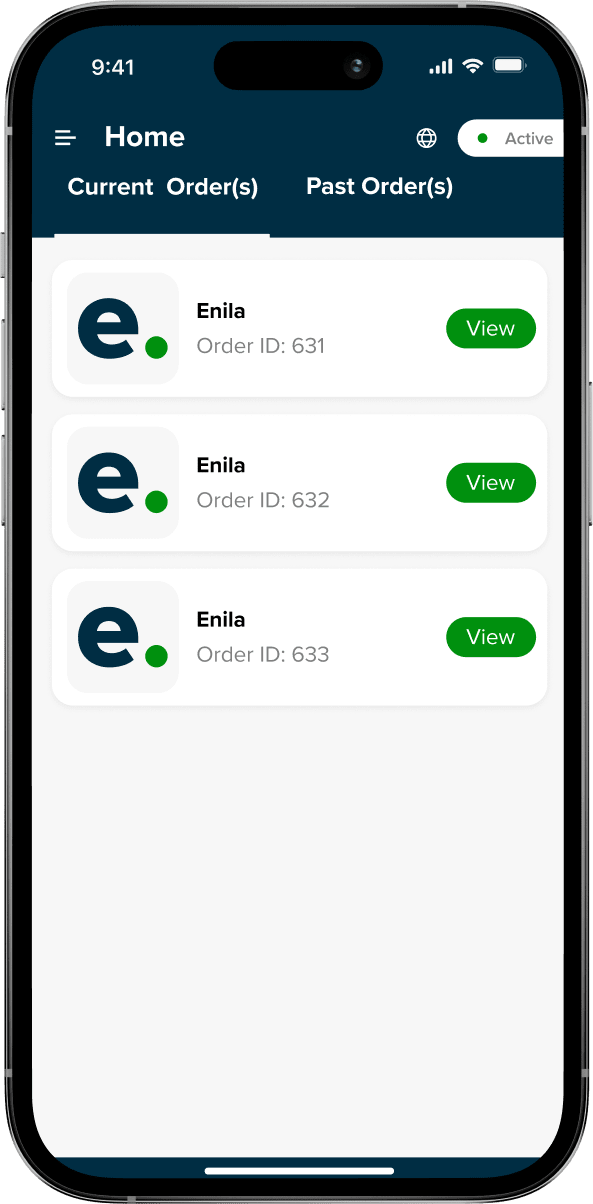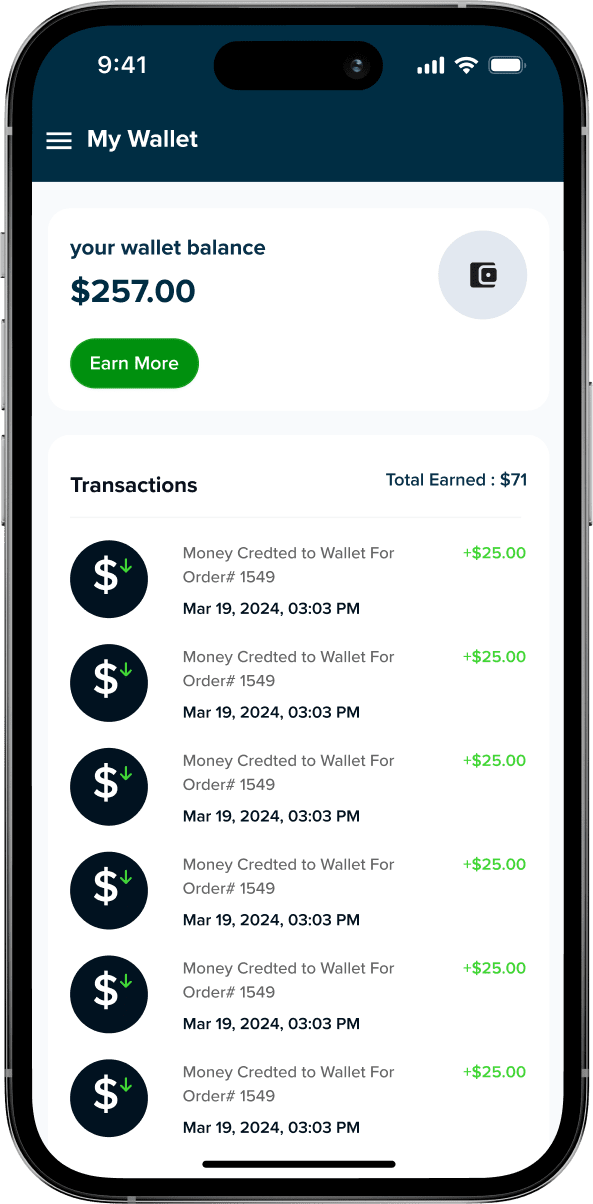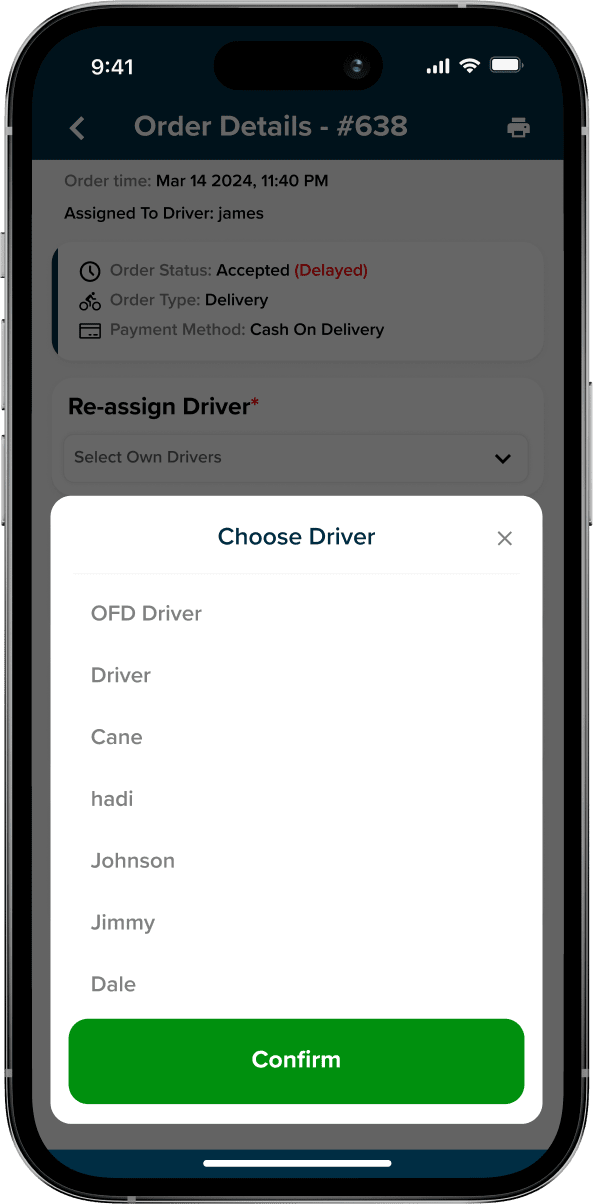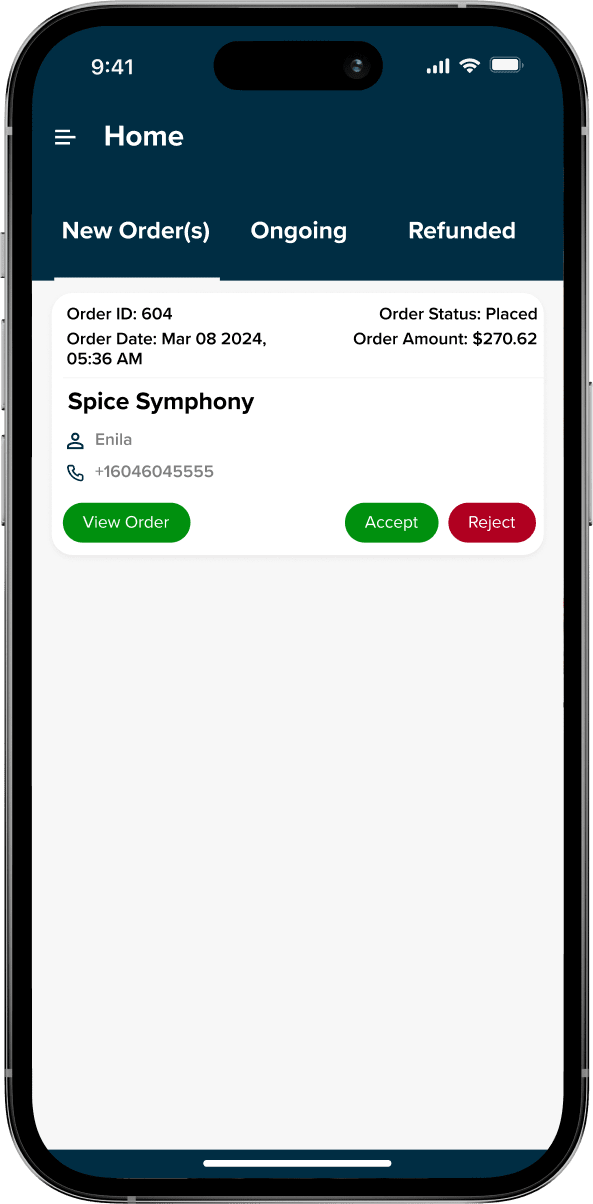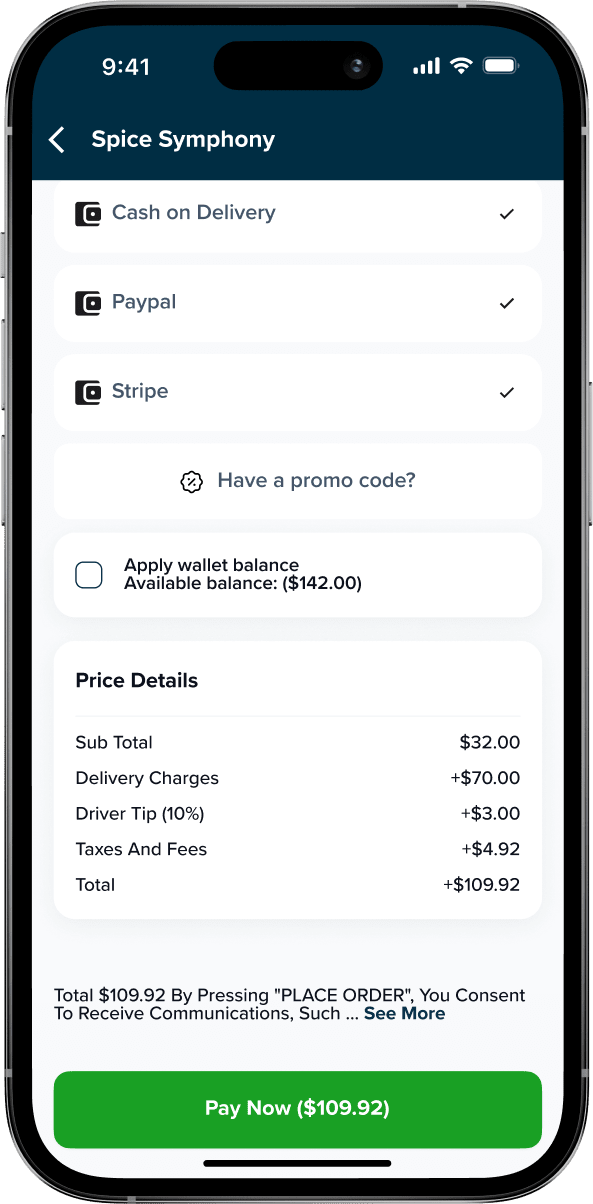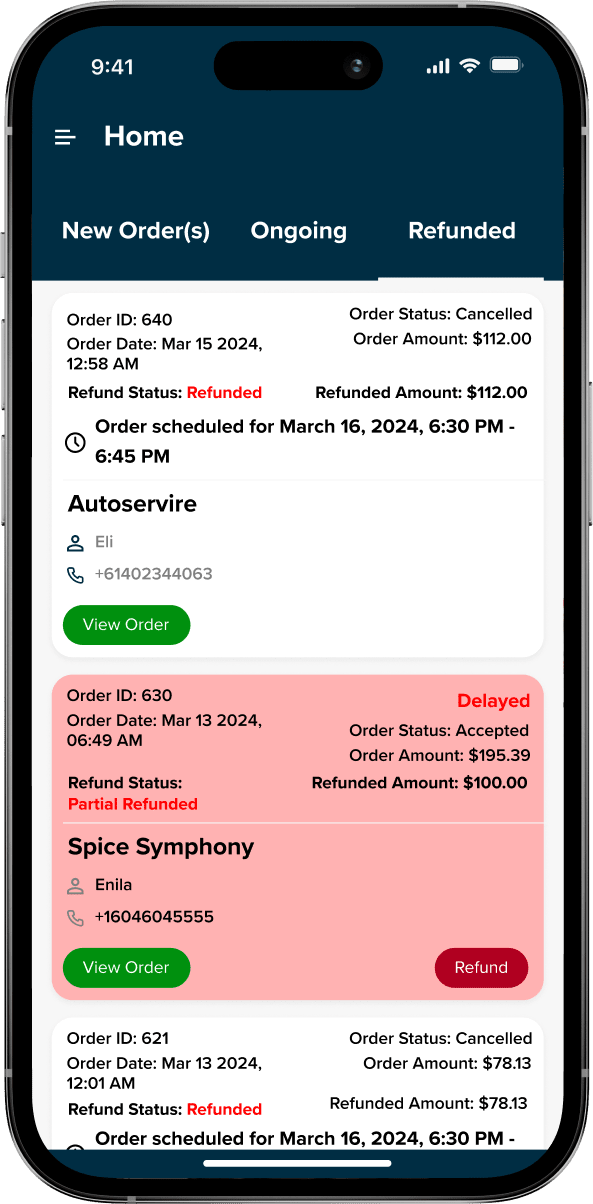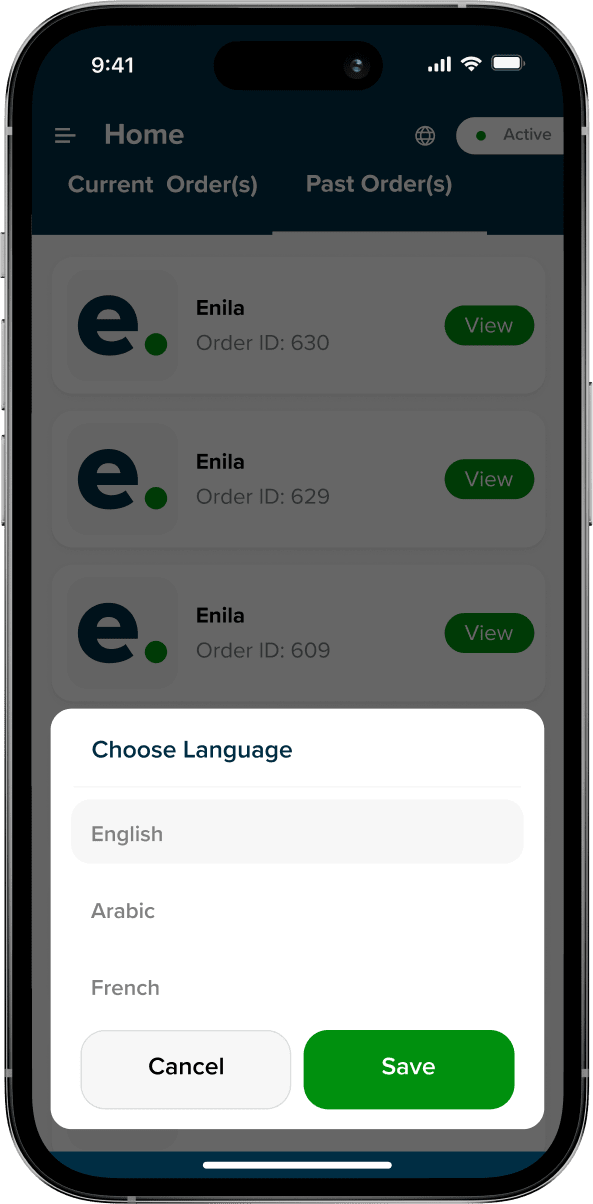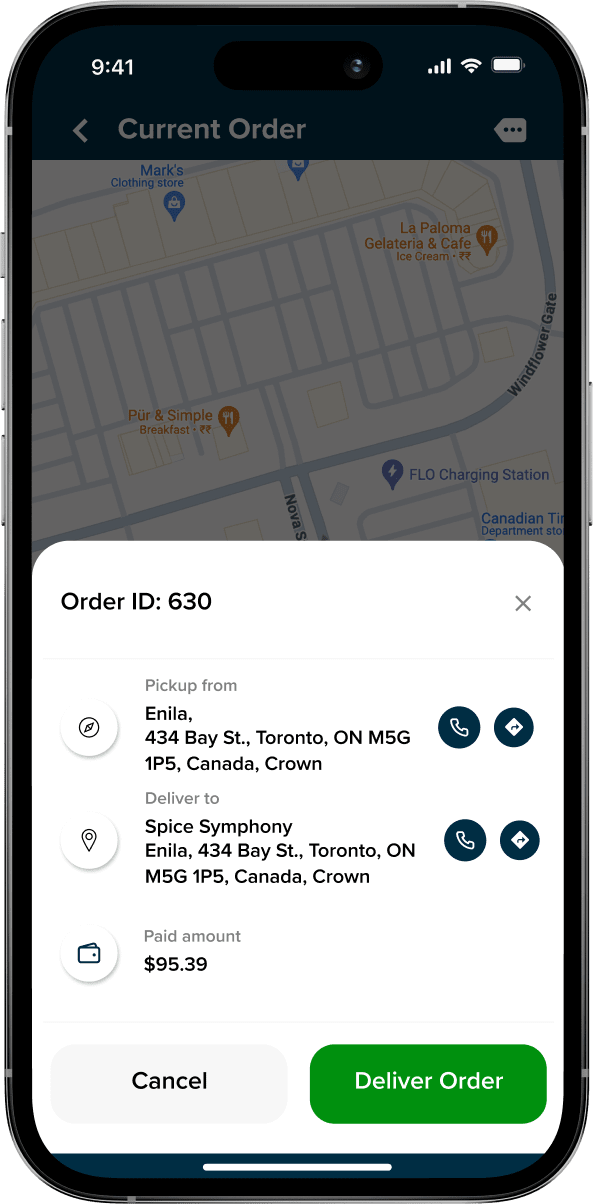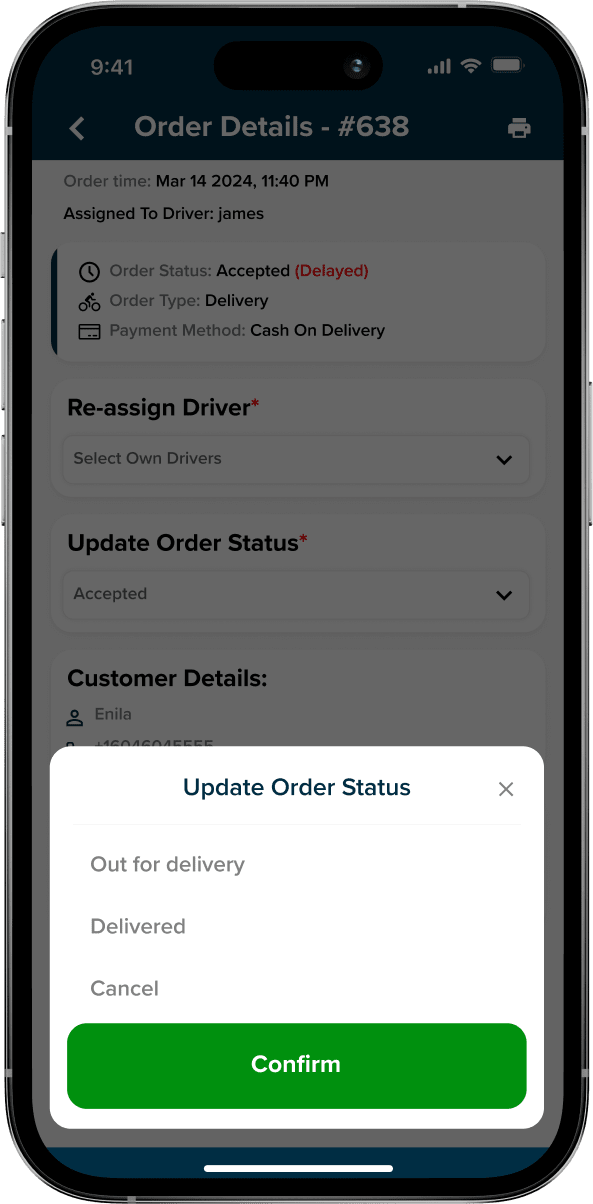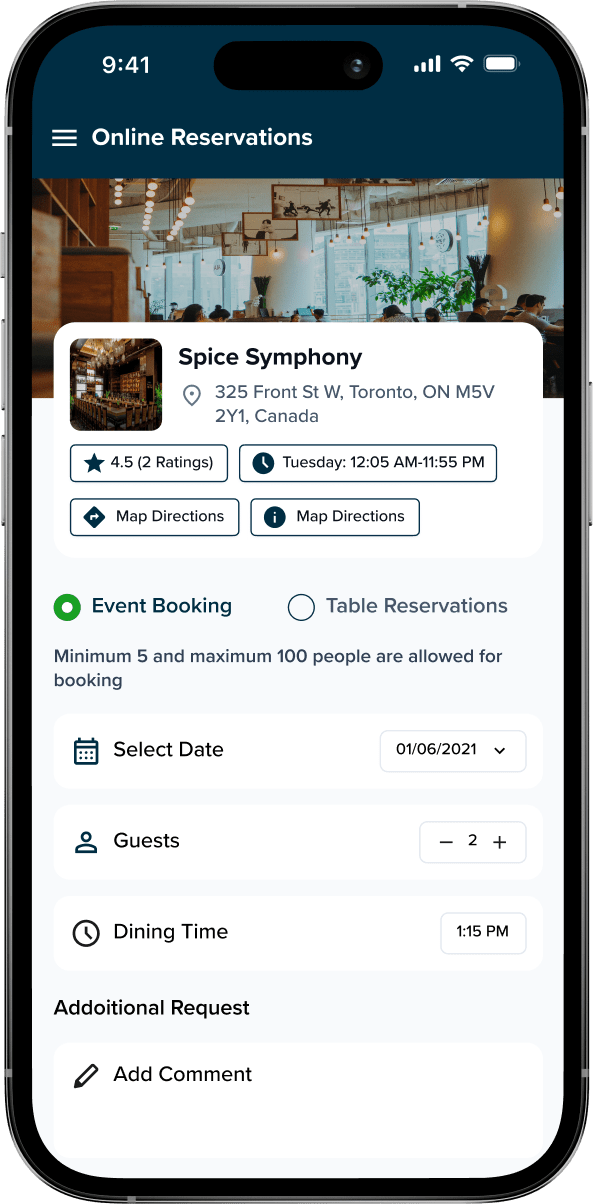
Streamlining Food Delivery in Dakar with Dakar Food Delivery (DFD) Mobile App
10K+
Dakar, Senegal
Undisclosed
66 Restaurants
French
Trending on Apple Store
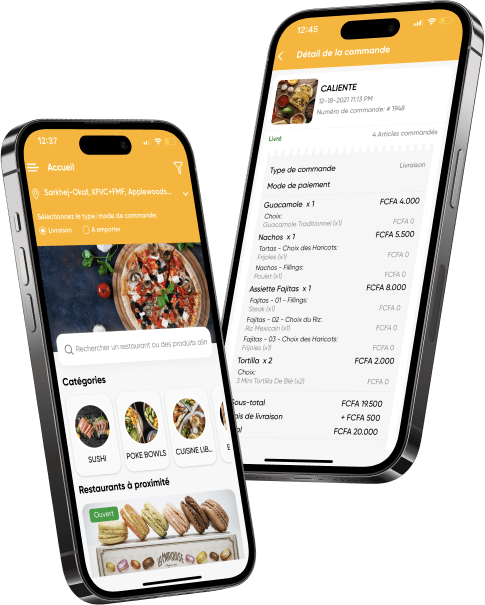

Streamlining Online Ordering for a Cloud Kitchen Success Story
Greece
Undisclosed
20+
Greek and English


Revolutionizing Food Delivery and Fighting Food Waste in Egypt
200K +
Egypt (UAE upcoming)
Undisclosed
357 Restaurants
English, Arabic
App Of The Day
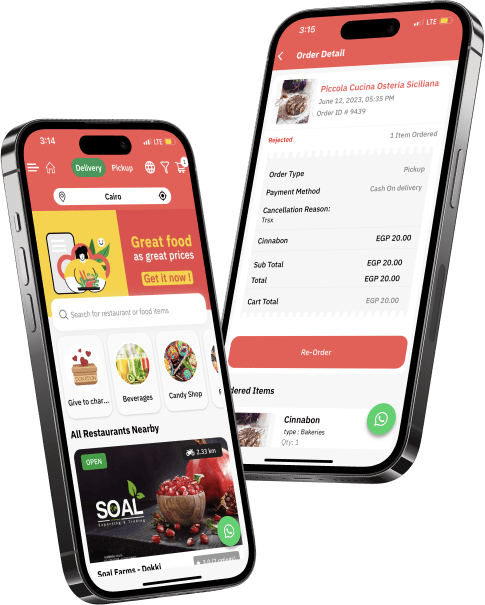

Enhancing Halal Food Delivery With Let's Halal App
6K+
USA
Undisclosed
1,413 Restaurants
English
National News Media
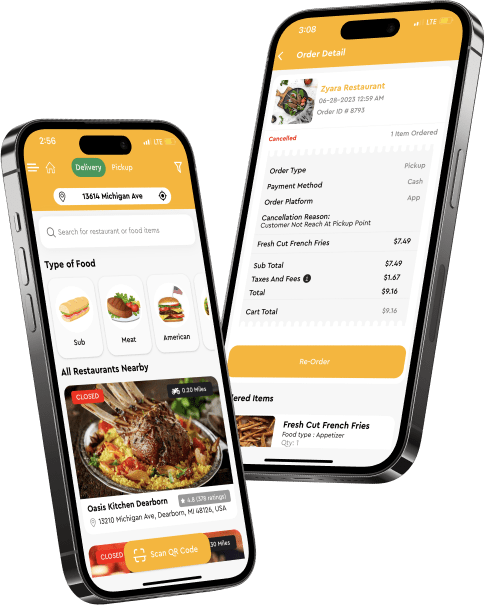

Simplifying the Delivery Process With Blink Express
10K+
Uzbekistan
Undisclosed
200+ Restaurants
Uzbek
App Of The Day
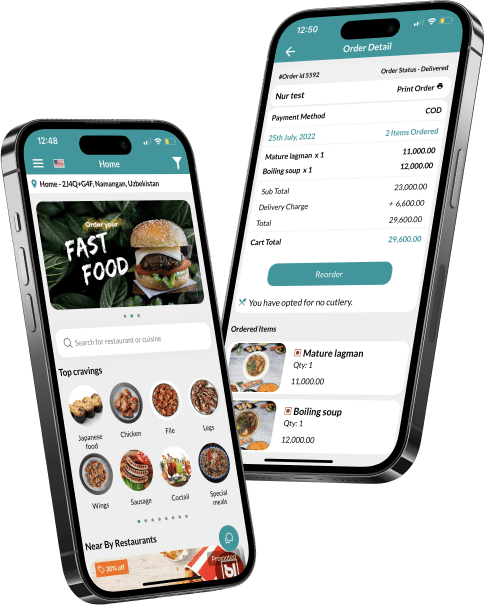
Why Choose Eatance MRP?
A scalable, user-friendly, fast, and profitable solution for multi-chain restaurants, fine-dining restaurants, entrepreneurs in the food delivery business, and multi-restaurant aggregators.2500
Stores in a Single Aggregator
1200+
Start-ups
1 Million+
Users
100,000+
Downloads
App Of The Day
App Store
Featured
In the National US News
Top Features of Multi Restaurant App
-
Customer App
-
Driver App
-
Store App
-
Admin Panel
Customer App
Branded customer ordering app for web & mobile
-
Easy Sign-Up
A streamlined process for quick onboarding with an intuitive interface, ensuring a hassle-free registration experience.
-
Restaurants List & Profile
Explore partner restaurants with detailed profiles, accessing menus, ratings, and reviews for informed choices.
-
Track Cart & Checkout
User-friendly cart for easy item selection and a seamless checkout process with secure payment options.
-
Easy Payment Options
Diverse payment methods, including credit/debit cards and digital wallets, ensure flexibility and convenience.
-
Orders List & Details
Clear display of order history with detailed information, keeping users informed on status and delivery updates.
-
Wallet
Integrated wallet for quick and convenient payments, allowing users to monitor balances and transaction history.
-
Recipes List & Details
Explore diverse recipes with detailed information, enhancing user engagement with a curated collection of culinary delights.
-
Online Reservations
Simple and efficient table reservations with confirmations and reminders for a seamless dining experience.
A streamlined process for quick onboarding with an intuitive interface, ensuring a hassle-free registration experience.
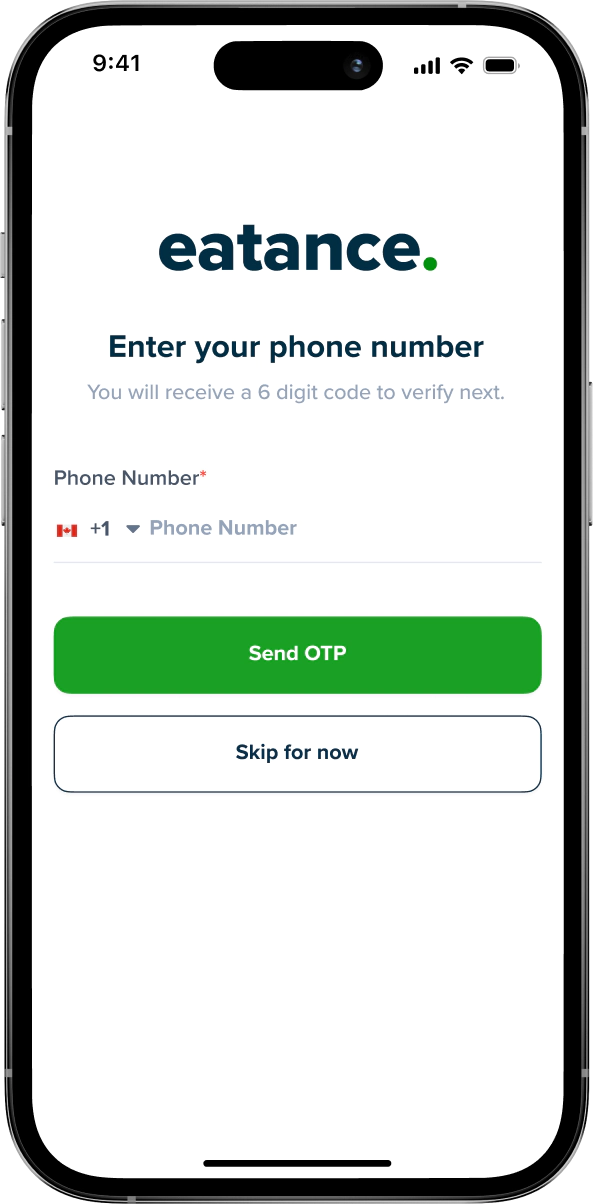
Seamless delivery control of orders
Manage your agents & deliveries efficiently.
-
Current/New Orders
Real-time display for efficiently tracking ongoing deliveries, ensuring timely order completion.
-
Past Orders
Accessible history provides a quick reference for completed deliveries, offering insights into past transactions and routes.
-
My Earnings
Clear overview with transparent income breakdown, offering drivers insight into their earnings and incentives.
-
Order Details
In-depth information about each order, including customer preferences, enhances delivery.
-
Online/Offline
A convenient toggle between online and offline modes provides optimal flexibility for drivers based on availability.
-
Order Management
Easily update order status for accurate tracking. Communicate with customers and restaurants seamlessly through the app.
-
Profile Management
Drivers can maintain and update personal and vehicle details, ensuring seamless management of their profiles.
-
Multilingual Compatibility
Support for multiple languages accommodates diverse driver backgrounds, enhancing communication.
Real-time display for efficiently tracking ongoing deliveries, ensuring timely order completion.
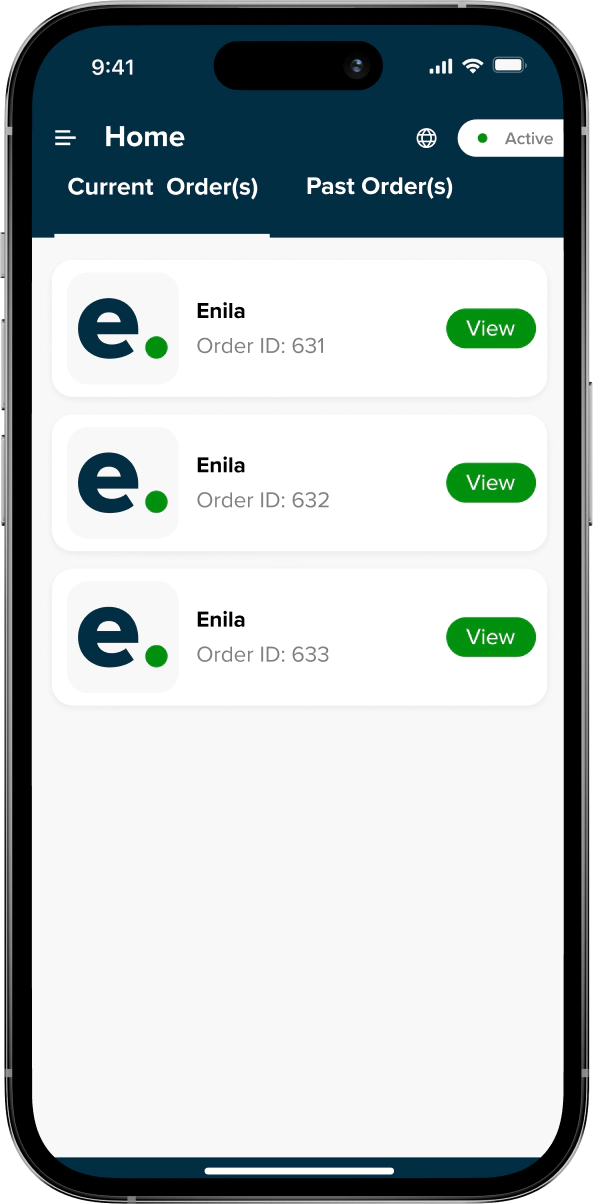
Convenient way to manage orders with ease
Provide a separate app for managing orders.
-
Easy Login
Simplified login process for store owners and staff. Secure access controls for account protection.
-
New Orders
Instant notification and access to incoming orders, ensuring efficient order management.
-
Ongoing Orders
Real-time monitoring for seamless order fulfillment and tracking, enhancing overall operational efficiency.
-
Refunded Orders
Quick access to refunded transactions simplifies refund process handling for improved customer service.
-
Past Orders
Detailed history of completed transactions for sales analysis and order trend reference.
-
Order Status Management
Convenient tools to update and manage order statuses, improving communication with customers and drivers.
-
Driver Assignment
Efficient assignment of delivery drivers to orders, ensuring streamlined coordination for timely deliveries.
-
Profile Management
Easy updating and maintenance of store profiles, including accessible management of staff accounts.
Simplified login process for store owners and staff. Secure access controls for account protection.

All-in-one multi-restaurant management panel
Get complete control of your website & mobile apps from your admin panel.
-
Analytics Dashboard
Track customer & restaurant activities to make informed orders, revenue, & engagement decisions.
-
Order Management
Streamlined tools for efficient processing, providing quick access to order details & real-time status updates.
-
Restaurant Management
Total command over partner restaurants' menu items, ensuring efficient control of profiles & information.
-
Delivery Zone Management
Create special delivery zones on the map to ensure customers can only place orders in serviceable areas.
-
Menu Management
Dynamic control over menu items, offering real-time updates for seamless customization, changes, & additions.
-
Coupon & Offer Management
Create & manage coupons for Dine-In, pickup, or delivery with percentage or fixed discounts on carts or items.
-
Online Reservation
User-friendly system for seamless online reservation management, integrated flawlessly with restaurant schedules.
-
Leaderboard
Monitor revenue, order statistics, restaurant and category sales, top-selling items, and coupon usage for strategic decision-making.
Track customer & restaurant activities to make informed orders, revenue, & engagement decisions.
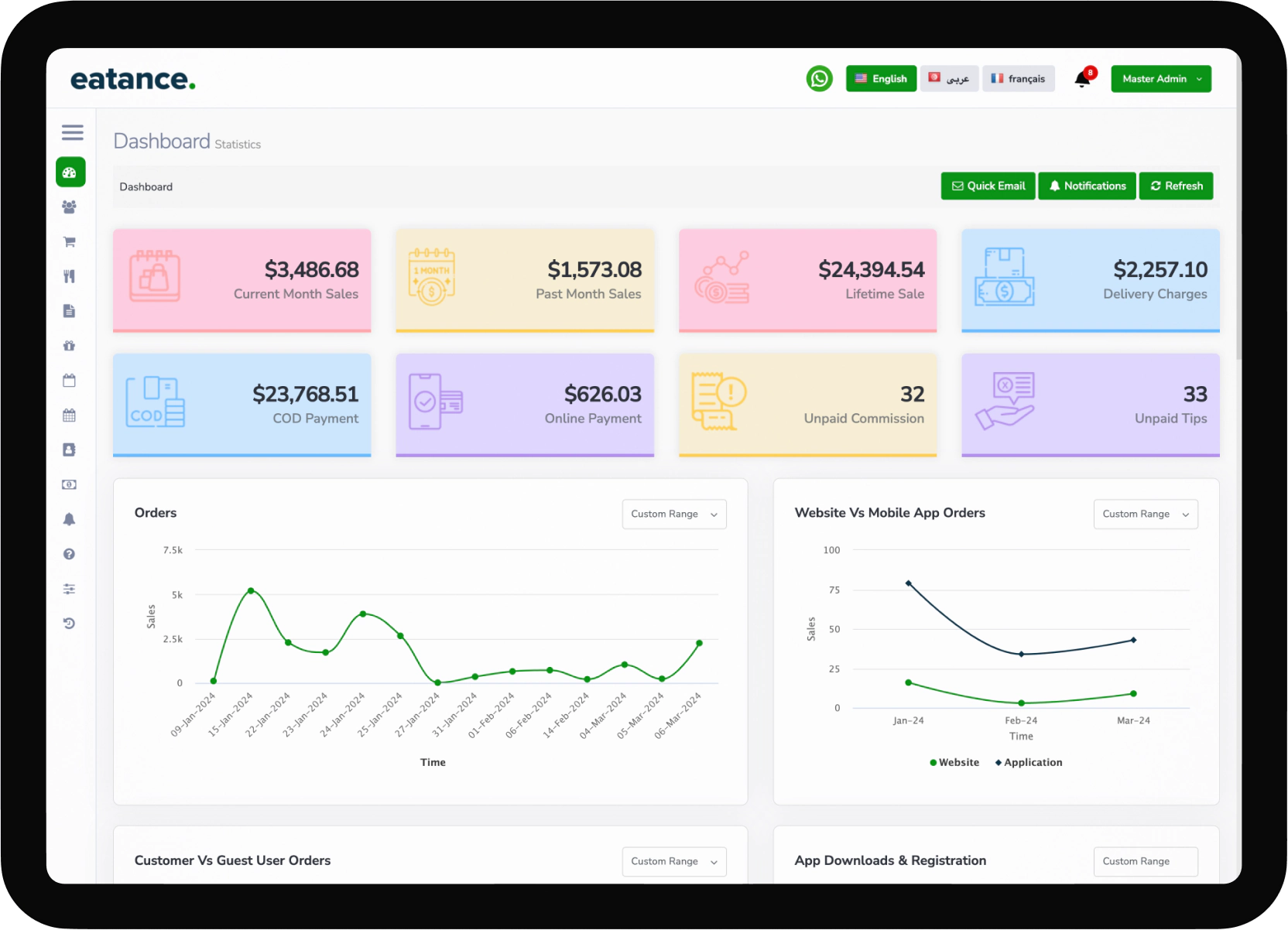
What You Get With
Multi Restaurant Pro [MRP]?

- Data intelligence admin dashboard to make smart decisions
- Admin management with mobile app access (iOS & Android)
- Customer mobile app for easy ordering (iOS & Android)
- Driver mobile app (iOS & Android)
- Food ordering Website
- API driven to integrate with third-party systems
- Customizable according to business needs
- Complete source codes of all app & license to customize
MRP Food Delivery App Tour
Our multifeatured app provides user-friendly features to help easy adaption for food industry consumers. Your online food delivery & multi restaurant aggregator business needs the right features to skyrocket sales & streamline operations.
Loved by the Restaurant Owners, Trusted by 2200+ Food-Tech Start-ups
On Demand Custom Services
We also provide customization services based on client requests to provide the best solution for their business needs. Here are our best custom features for on-demand food delivery businesses.
Payment Gateway Integration
Payment integration like CMI Payment, SPPC Payment, Fatorah etc. Also, set the split payment with a stripe.
Delivery Partner Integration
Delivery partner integration with Doordash, relay, Shadowfax, etc.
Delivery Fee Algorithm
Delivery fee calculation work like base price + per kilometer + city + Time + Weekday, etc.
Credit Card Fee Algorithm
Credit card fee calculation based on the payment method.
Menu Item Gallery
More images can be uploaded from the admin panel for each menu item.
Schedule Management
Schedule the holidays/closed days to manage online orders more efficiently.
Checkout OTP Verification
Integration with Twilio, Firebase, etc., is needed for OTP verification at the checkout flow.
QR Code Validation
QR code validation in order to validate the driver pick up and delivery.
Kitchen App
Kitchen app for seamless communication with the kitchen with cooking instruction notes.
Chef Management
Advance chef management module for chefs for easier & faster access.
Waiters Management
The waiter management module allows them to take dine-in orders for customers.
Automated Call Reminder
Automated phone call reminders for admin so that there are unattended orders.
Live Chat
Integrate chat feature between restaurant & customers after order is accepted.
Fetch RSS Feeds/Blogs
Simply fetch existing blogs, RSS feeds & show them in our mobile application.
Driver Tracking
Track all drivers on the map & decide whom to allocate the new orders.
Finance Settlement Module
Process all the payments in/out of the system with the use of a payment gateway.
Midnight Deliveries
Allows restaurants to set the close time & perform seamless execution of operations.
Scheduled Orders
Customers can pre-order items & also manage a number of days for pre-ordering.
Invoice Printing
Easy printing for hand-held POS devices & thermal printers.
Layout Changes
Transforming the layout to reflect your brand or highlight your features can be easily done.
On Demand Custom Service
Customizable Features: We also create features as per your business requirements, just connect with us.
Multi Restaurant Pro for Food Businesses
Multi-restaurant food delivery apps are the best fit for restaurant and food business owners who want to expand their reach and streamline their food delivery operations. With its comprehensive features and easy-to-use interface, the app can help small restaurants, food trucks, cloud kitchens, chefs, and food delivery startups grow their businesses and increase their revenue.
Get Food Delivery App Demo
You can get a free live demo by placing a request below. You can log in to check all the best features to ensure it fulfils your business model & serves the purposes that you intend to use it for.
Frequently Asked Questions
We have created our FAQ based on all the questions we hear from all our customers. Please refer to them to get better clarity about the Eatance.
-
What is Eatance?
Eatance is a Food-Tech platform revolutionizing the dining and food delivery industry. It offers a comprehensive app that simplifies food ordering, table reservations, and access to food events for diners while providing restaurants and food entrepreneurs with tools to enhance their customer engagement, streamline operations, and increase sales. Eatance focuses on creating a seamless, efficient, and rewarding dining ecosystem for both consumers and businesses.
-
What is Eatance App?
-
What is Eatance Multi-Restaurant Pro [MRP] Aggregator & Food Delivery App?
-
Where are you based?
-
What type of support can I expect with the MRP product?
How To Videos
Welcome to our product demonstration & "How To" tutorial. We have a recorded full demo video & tutorials that explain step-by-step "How to use the Eatance multi-restaurant food ordering & delivery app".

Happy Magazine
Take a quick read about what's trending & new in the restaurant industry. Learn about all the important updates, restaurant trends, Ideas & innovations going on.

Toronto, 19th June—In a spectacular event at the Collision Conference, attended by 40,000 people from 130 countries, Maulik Pandya and the Eatance team officially launched the “No Markup Food Ordering” Eatance app. The launch received strong support from the Ontario Center of Innovation and OneEleven Accelerator members. Marking its grand
Read More
As winter blankets the Greater Toronto Area, the desire for cozy vibes and delicious food takes center stage. Savor the Season Campaign on the Eatance App, offering exclusive restaurant food deals at top restaurants. Imagine unlocking enticing offers at your favorite eateries—conveniently at your fingertips. With the Eatance App, your
Read More


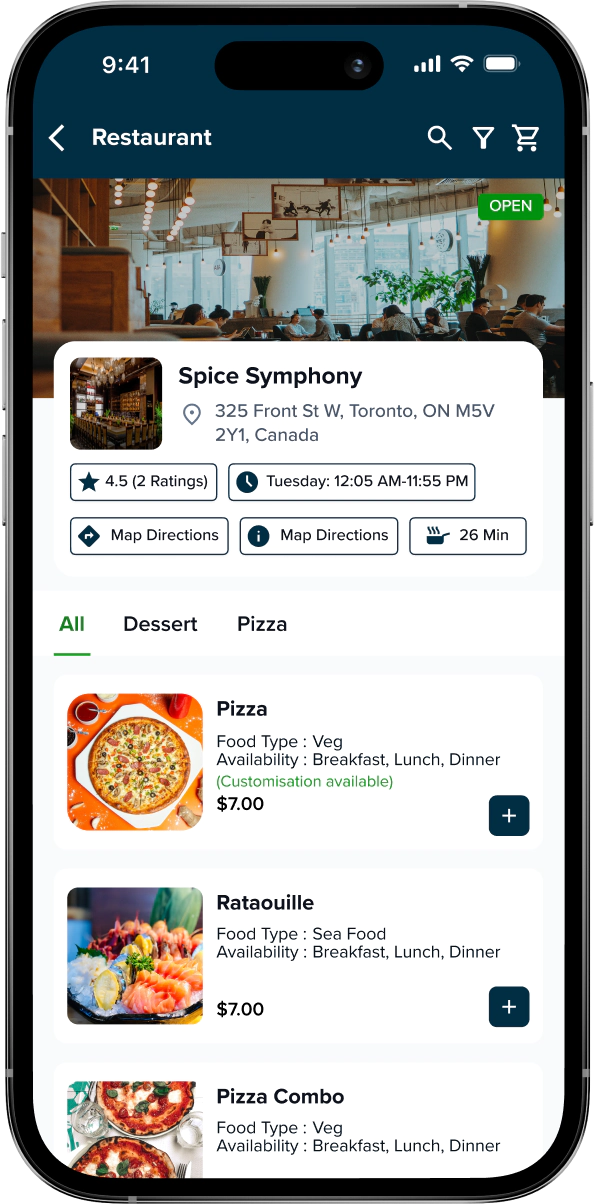

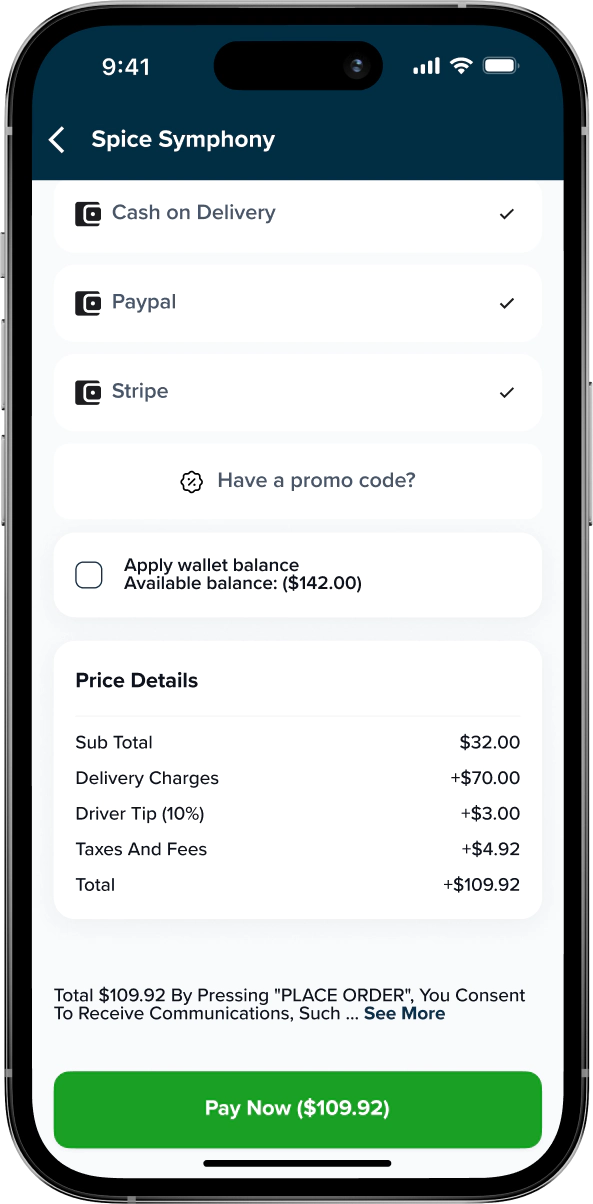

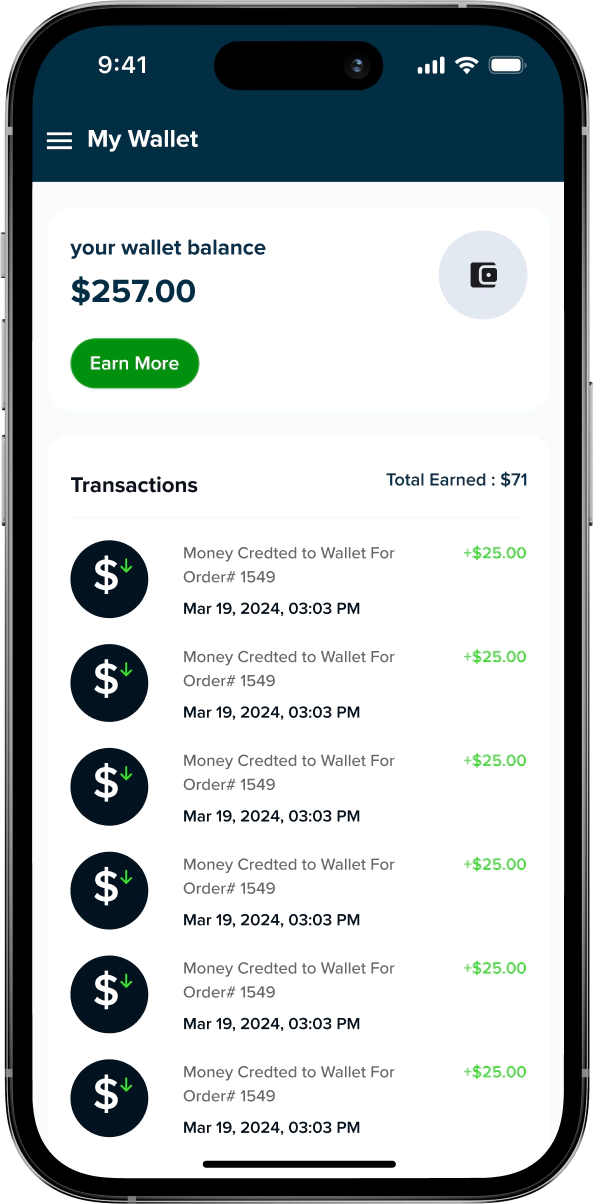
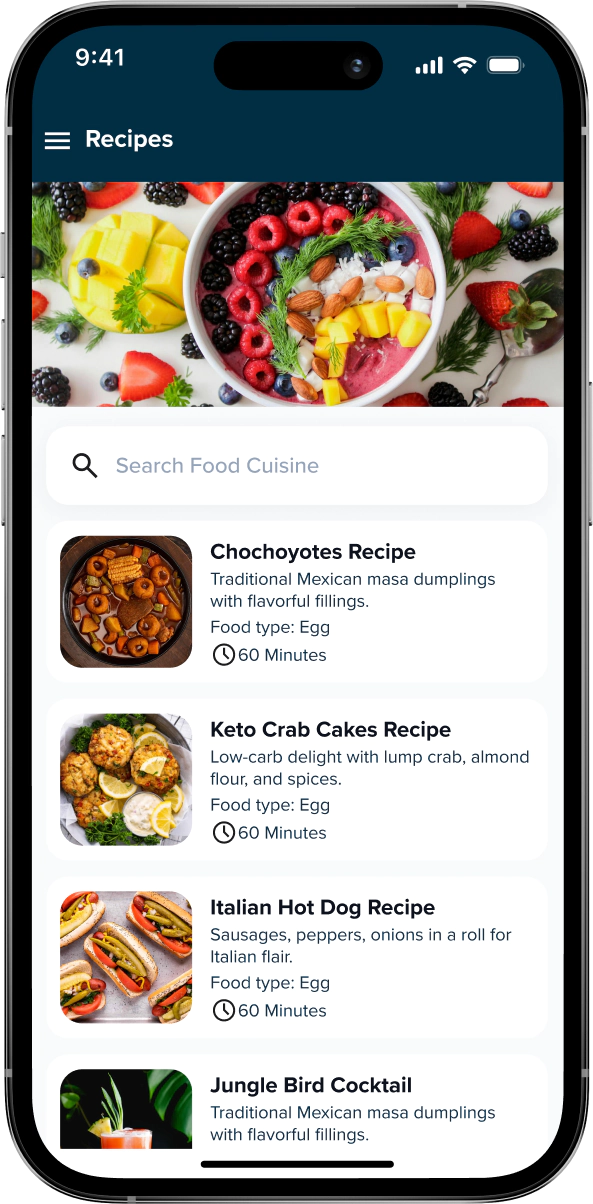
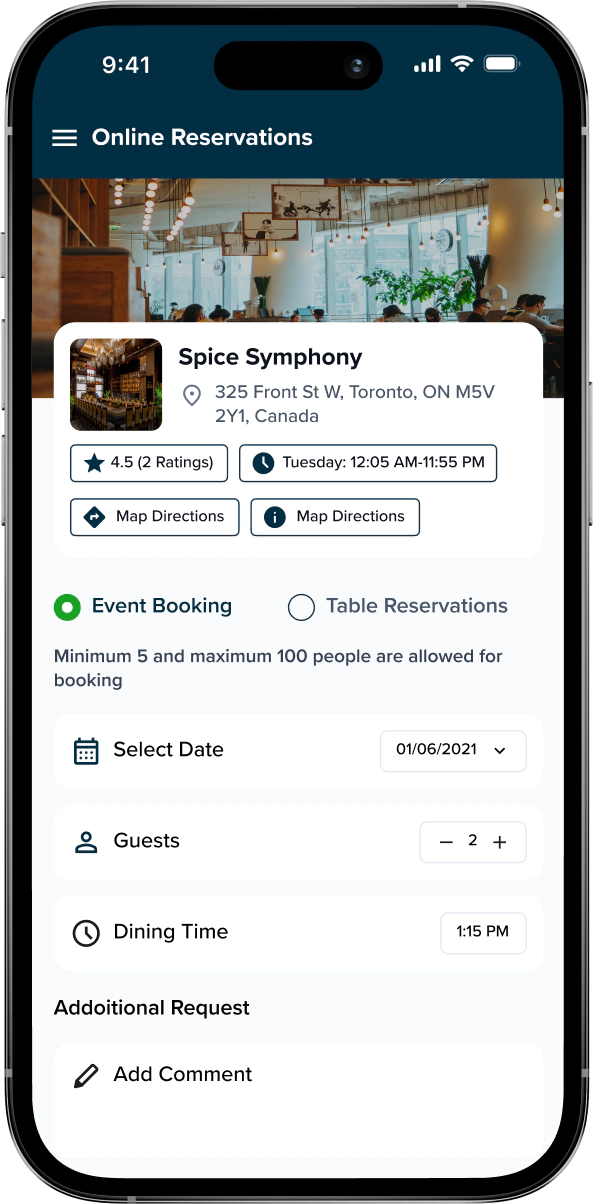


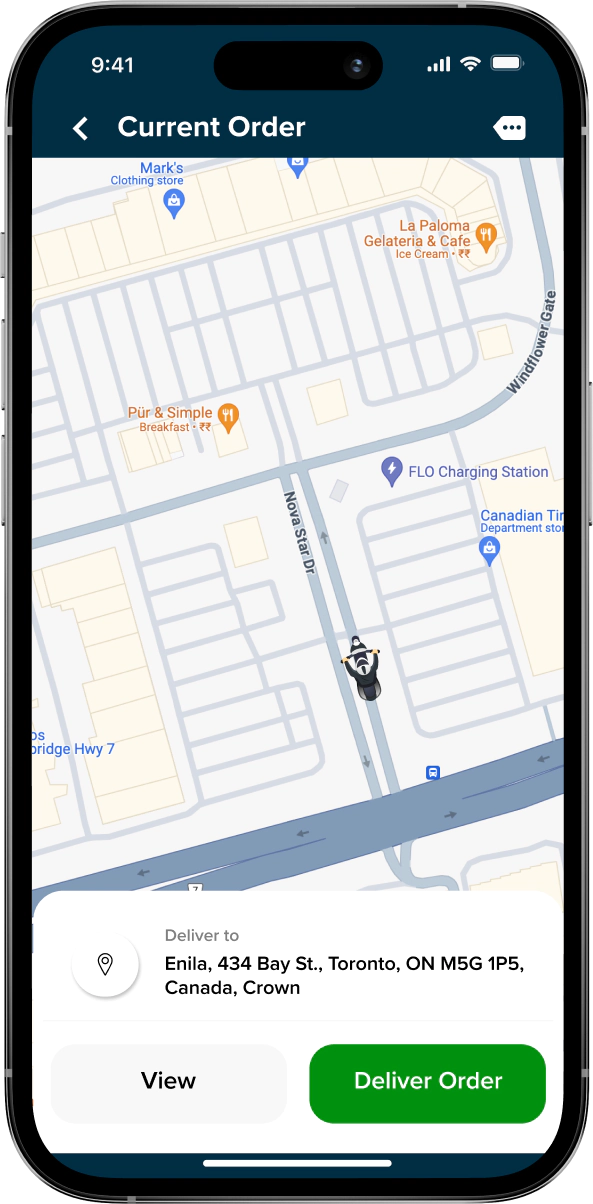
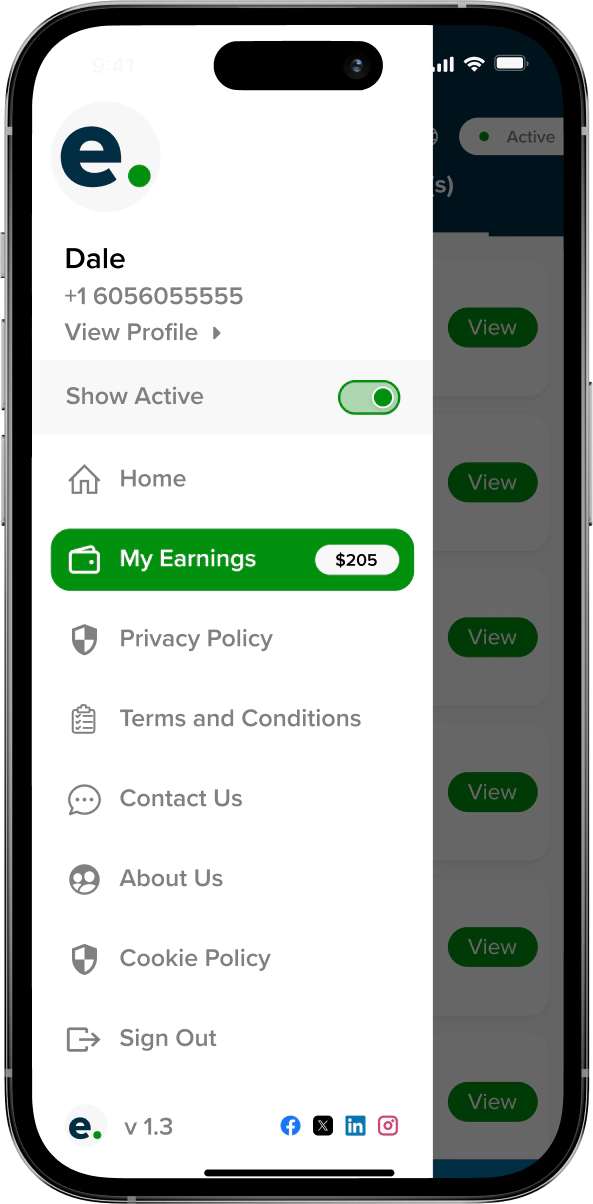


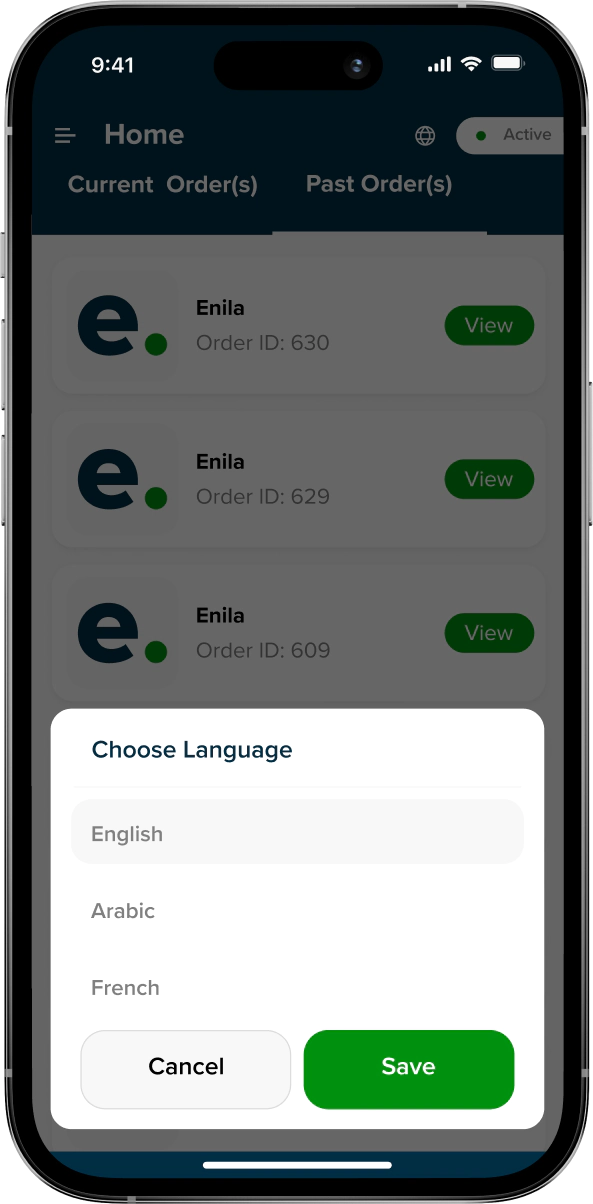

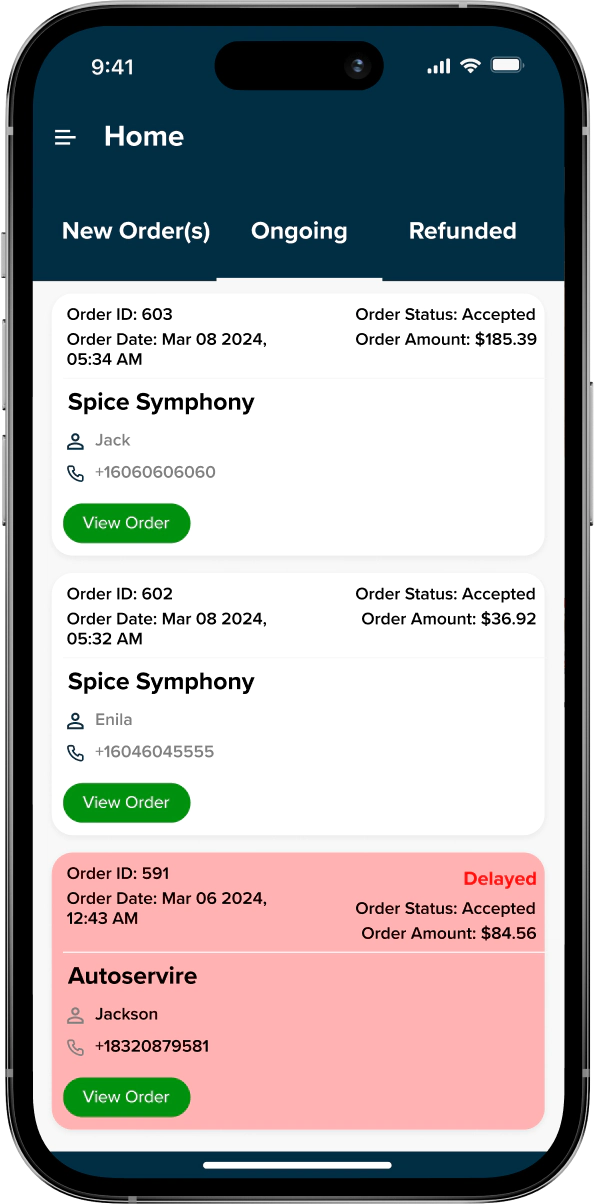
 width="340" height="363"
width="340" height="363" 